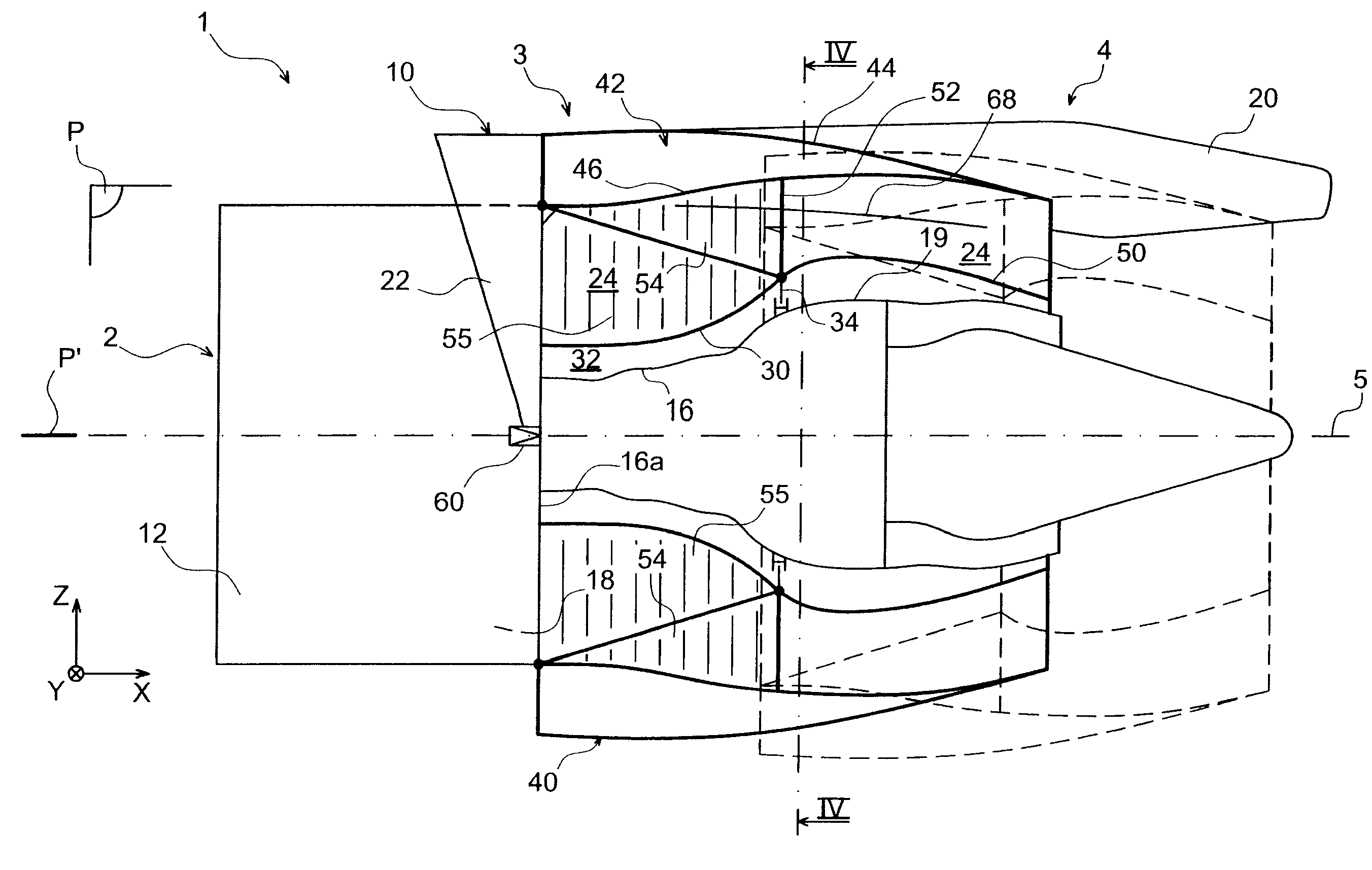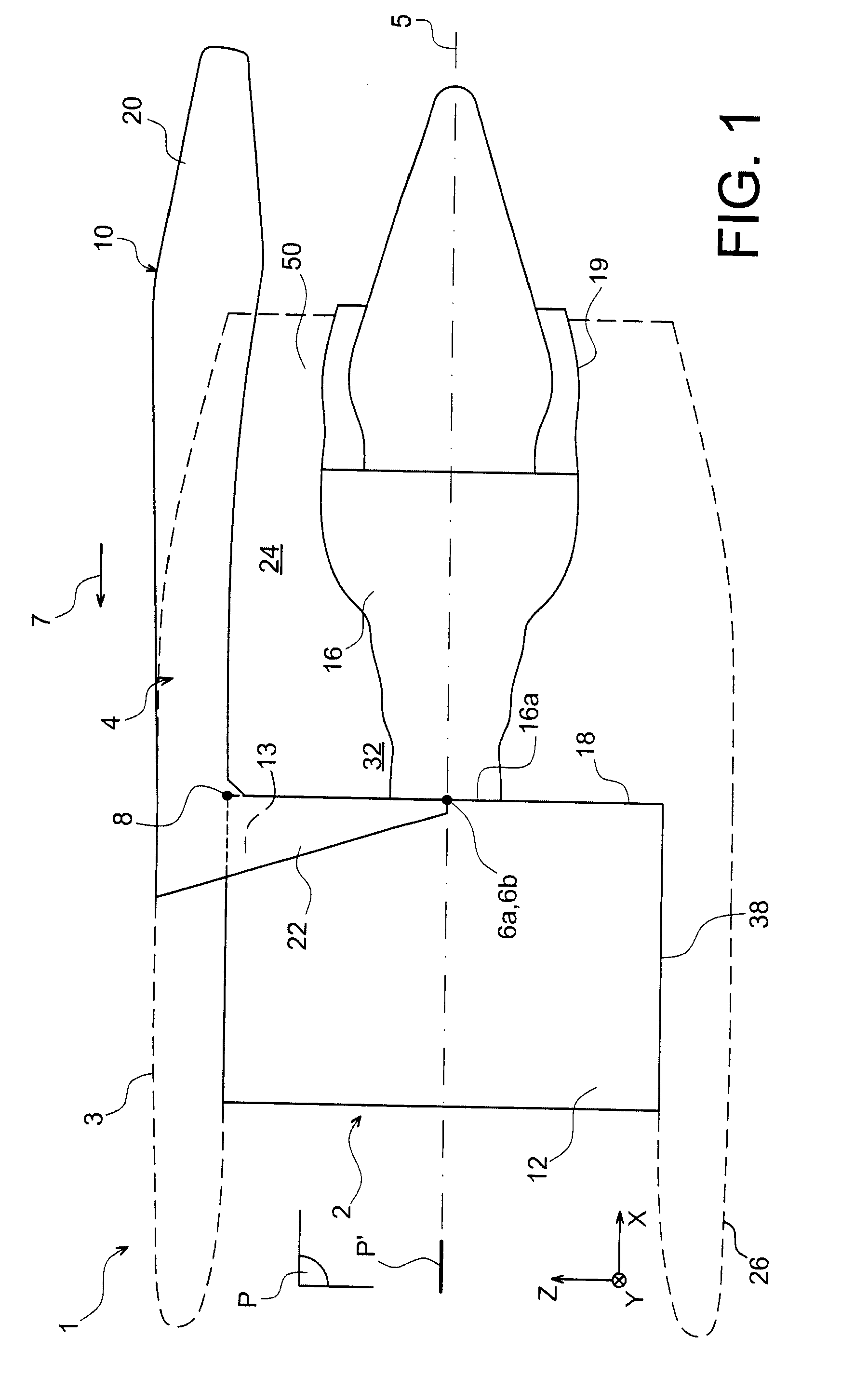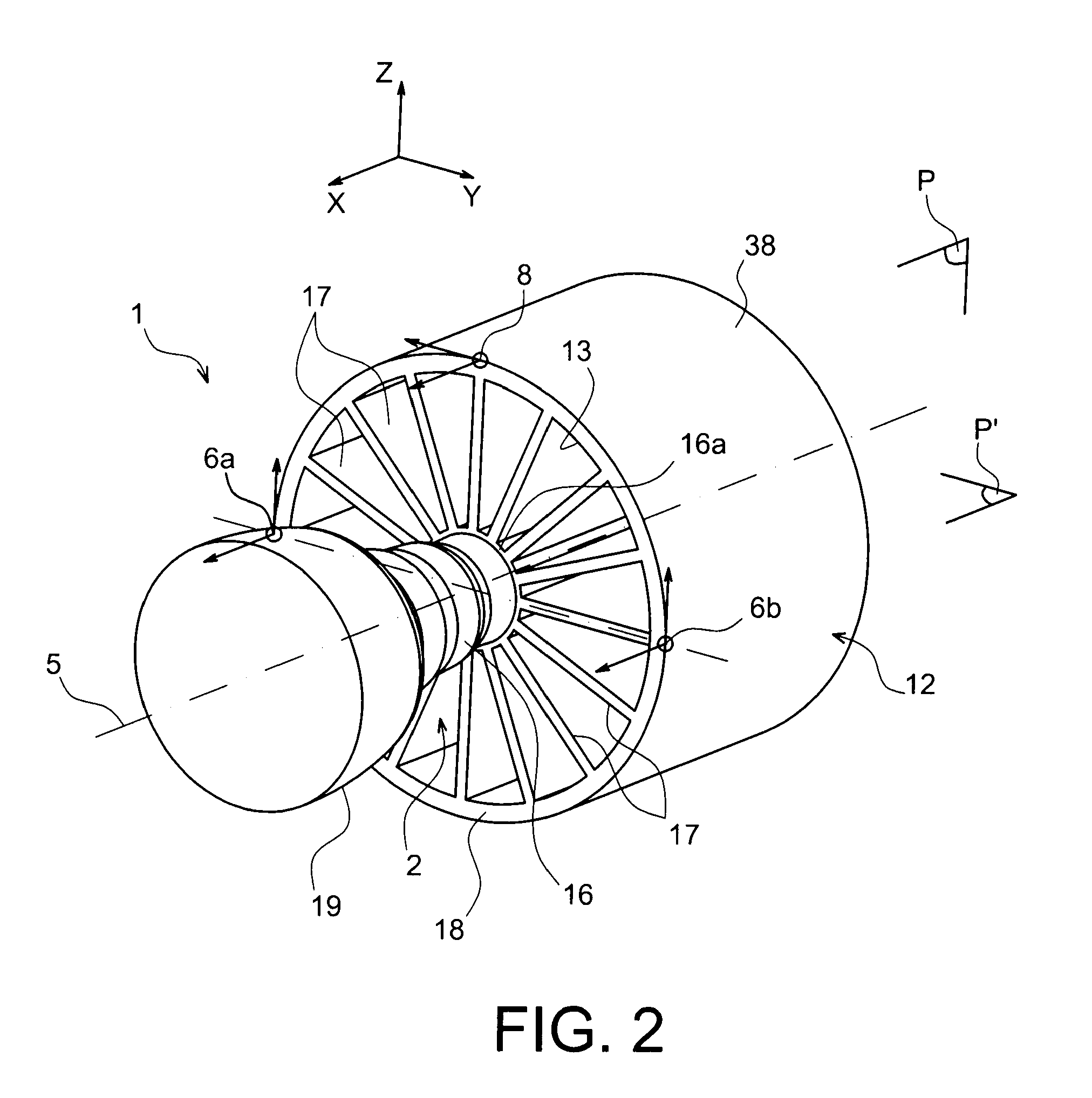Engine assembly for aircraft with sliding nancelle
a technology of sliding nacelle and engine, which is applied in the direction of machines/engines, power plant inspection panels, air-flow influencers, etc., can solve the problems of insufficient acoustic treatment of the nacelle, inability of the nacelle to attenuate the deformation of the turbojet, and insufficient structural capacity of the nacelle to achieve the effect of reducing the bending of the turbojet, reducing the potential friction, and high stiffness of the mobile na
- Summary
- Abstract
- Description
- Claims
- Application Information
AI Technical Summary
Benefits of technology
Problems solved by technology
Method used
Image
Examples
Embodiment Construction
[0054]FIG. 1 shows an engine assembly 1 for an aircraft according to a preferred embodiment of this invention, this assembly 1 being designed to be fixed under an aircraft wing (not shown).
[0055]Globally, the engine assembly 1 comprises a turbojet 2, a nacelle 3 shown diagrammatically in dashed lines, an attachment pylon 4, and a plurality of engine attachments 6a, 6b, 8 fixing the turbojet 2 under this pylon 4 (the attachment 6b being hidden by the attachment 6a in this FIG. 1). Note for information that the attachment pylon 4 comprises another series of attachments (not shown) used to suspend this assembly 1 under the aircraft wing.
[0056]In the following description, by convention X is the direction parallel to a longitudinal axis 5 of the turbojet 2, also corresponding to a longitudinal direction of the engine assembly and the pylon, Y is the transverse direction for this same turbojet 2 also corresponding to a transverse direction of the engine assembly and the pylon, and Z is t...
PUM
 Login to View More
Login to View More Abstract
Description
Claims
Application Information
 Login to View More
Login to View More - R&D
- Intellectual Property
- Life Sciences
- Materials
- Tech Scout
- Unparalleled Data Quality
- Higher Quality Content
- 60% Fewer Hallucinations
Browse by: Latest US Patents, China's latest patents, Technical Efficacy Thesaurus, Application Domain, Technology Topic, Popular Technical Reports.
© 2025 PatSnap. All rights reserved.Legal|Privacy policy|Modern Slavery Act Transparency Statement|Sitemap|About US| Contact US: help@patsnap.com



